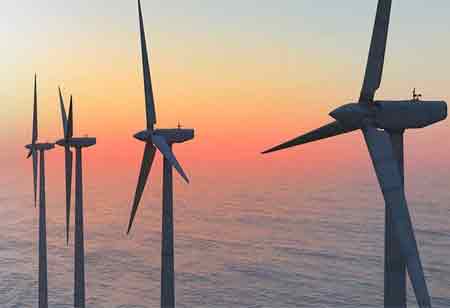Thank you for Subscribing to Energy Business Review Weekly Brief
Sustainable Architecture and Energy Use in Europe
The importance and growing adoption of sustainable architecture in Europe emphasise its key principles, successful implementations, and the driving forces behind this shift.

By
Energy Business Review | Monday, November 10, 2025
Stay ahead of the industry with exclusive feature stories on the top companies, expert insights and the latest news delivered straight to your inbox. Subscribe today.
FREMONT, CA: Sustainable architecture is a trend and a necessity in today’s world. With climate change and resource depletion becoming pressing issues, the construction sector, which accounts for a significant portion of global carbon emissions, is under intense scrutiny. Europe has been at the forefront of adopting sustainable building practices, leading the way in innovative designs and energy-efficient solutions.
Principles of Sustainable Architecture
Sustainable architecture minimises environmental impact throughout a building's lifecycle—construction, operation, and eventual demolition. Central to this approach are several key principles. Energy efficiency is pivotal in integrating LED lighting, solar panels, and high-performance insulation materials. Many European buildings also incorporate passive design strategies, leveraging natural light and ventilation to reduce dependence on artificial systems. Sustainable materials are another cornerstone, with a growing preference for recyclable, renewable, or bio-based materials like timber, bamboo, and straw bales due to their low carbon footprint. Water conservation efforts emphasise rainwater harvesting, water-efficient appliances, green roofs, and permeable surfaces to reduce wastage and enhance water management. Adaptive and flexible design ensures buildings evolve to meet changing needs with minimal reconstruction. Mindful landscaping promotes biodiversity, mitigates heat island effects through green spaces, and incorporates native vegetation.
Energy-Efficient Building Designs in Europe
Energy-efficient architecture transforms Europe’s built environment, significantly reducing greenhouse gas emissions while meeting ambitious sustainability goals.
Passivhaus Certification, pioneered in Germany, focuses on ultra-low energy buildings achieved through airtight designs, robust insulation, and high-performing windows. Austria, Switzerland, and Belgium showcase innovative Passivhaus projects highlighting this approach's efficacy. Beyond this, net-zero and positive-energy buildings are gaining traction across Europe. Net-zero buildings produce as much energy as they consume, while positive-energy structures go further by supplying excess energy to the grid.
The integration of renewable energy sources is another hallmark of European sustainable design. Rooftop photovoltaic panels, geothermal systems, and wind energy are widely adopted. Initiatives like the Barcelona Solar Ordinance, mandating solar thermal installations in new buildings, and Denmark’s extensive wind energy utilisation exemplify this commitment. Retrofitting existing structures also presents a unique challenge in Europe, where historical buildings must be upgraded with energy-efficient technologies while preserving their heritage. The EnerPHit standard addresses these needs by combining passive design principles with sensitive restoration efforts.
Policies and Incentives Driving Change
The European Union has established robust frameworks and incentives to accelerate the adoption of sustainable architecture. The European Green Deal commits member states to achieve carbon neutrality by 2050, prioritising green building practices. Similarly, the Energy Performance of Buildings Directive (EPBD) mandates energy performance certifications and nearly zero-energy building (NZEB) requirements for new and existing structures. Financial incentives, including subsidy programs and tax breaks, encourage homeowners and businesses to invest in energy-efficient systems. Together, these measures drive a transformative shift towards a more sustainable built environment across Europe.
Technological advancements and societal shifts will shape the future of sustainable architecture in Europe. Innovations such as 3D-printed structures using low-carbon materials, urban farming within buildings, and smart grid-connected neighbourhoods are on the horizon. Moreover, collaborations between architects, governments, and stakeholders are crucial in scaling these efforts.
Building green is not just about reducing environmental impact; it is about creating healthier spaces for people and the planet. Europe continues to set an example by investing in sustainable architecture and energy-efficient designs. As these principles become more ingrained and technologies evolve, the vision of a greener, more sustainable built environment is not only possible but imminent.






